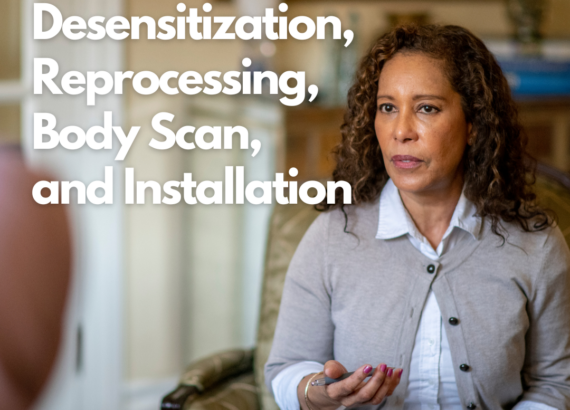Adaptive Information Processing – Ep. 63

Listen in to learn how Melissa, Jen, and Bridger conceptualize the adaptive information processing model.
Adaptive Information Processing: The Basics
- The past dictates your present
- How you processed your past has a direct influence on your current symptoms
- Information processing system
- All the information (external and internal) is relevant to us as an organism
- The way we learn to process and store all those bits of information creates our information processing system
- In EMDR, we work directly with this system
- A client’s information processing system explains why they are processing the world the way they are
“Our information processing systems are directly influenced by our life experiences and the life experiences of the generations before” (15:16).
Adaptive Information Processing: Creation of the Information Processing System
- Your system/body is designed to process information a certain way
- This system is created by experience
- If there’s trauma in early childhood the system is maladaptively built
- When you’re sitting with a client, conceptualize the client as a mammal with basic needs, genetic material, and living within several systems
- In order to be processed, genetic material and experiences must interact
- The constant communication between genetics and experience is where AIP lives
“When something is happening right here, right now, always be thinking about where it came from. Even when the client is telling you they don’t know, that just means they don’t know explicitly and cognitively. Don’t fall for the idea that anything happens in isolation to a human being, that’s just not real. If we can find the trail of breadcrumbs, we can find the root. And when we find the root, that is where our work lies” (18:16).
Adaptive Information Processing: Past, Present, Future
- The past is always informing the present.
- This means the present moment is how we influence the future.
- When working in the here and now, this moment will become the past that our future self always references.
- Thus, our clients’ experience with us becomes the past to which their future systems refer.
- This is what future templating is actually about.
- Bring explicit attention to this present moment.
- This can be as simple as the relationship between client and therapist.
- Next, install it as a resource through bilateral.
- This allows it to become a memory network.
- By doing this, the client will have a new network to call upon as they begin to determine how to show up, what to expect, how to navigate relationships, etc.
“Remember where you came from, think about where you’re going, but live right here where you are. That is what AIP tells us to do with our clients” (24:00).
In Summary
- The creation of memory is a state-dependent process.
- This process includes all the emotions, body sensations, sounds, and images involved in the experience.
- This explains why when a similar-enough experience occurs, all the feelings stored with the memory come flooding back.
- So the goal of EMDR is to reprocess the memory in a form that feels more adaptive to the client.
- In other words, EMDR reprocesses memory with the goal that the client won’t be debilitated when the experience is later recalled.
Gain access to exclusive content and support the show through Patreon!
Episode Links
- For more information on how to talk to your clients about AIP and for more metaphors, check out Episode 2: Introducing EMDR
- To learn more about Somatic Integration and Processing, check out Episode 46: Somatic Integration and Processing
- Want more content? Check out our other podcasts:
- Beyond Trauma
- Evidence-Based Therapist
- Burnt Out Educator (coming soon!)
Resource Links
- For a full list of our current training opportunities check out our website or contact us
- Interested in attending a retreat or referring a client? Contact us here!
- Contact Jen about consultation groups!






No Comments